Questo progetto mostra come implementare una semplice parte di Glassware che dimostra le principali funzionalità dell'API Google Mirror.
Per vedere una demo completa del progetto ad avvio rapido, vai a https://glass-python-starter-demo.appspot.com. In caso contrario, continua a leggere per scoprire come eseguire il deployment della tua versione.
Prerequisiti
SDK di App Engine per Python - Il progetto di avvio rapido Python viene implementato utilizzando App Engine. Ti servono l'SDK Python di App Engine per sviluppare ed eseguire il deployment del tuo progetto. Esegui il programma di installazione, se appropriato per la tua piattaforma, oppure estrai il file ZIP in una posizione comoda.
Creazione di un'istanza di Google App Engine
Dovrai ospitare il progetto di avvio rapido su un'istanza di Google App Engine:
- Vai a http://appspot.com.
- Fai clic su Crea applicazione e crea un'istanza pubblica di Google App Engine ospitata su
appspot.com. - Assegna all'applicazione un identificatore applicazione e lascia l'autenticazione Aperta a tutti Google Utenti con account. In un secondo momento avrai bisogno dell'identificatore dell'applicazione per configurare il progetto di avvio rapido.
Creazione di un progetto nella console API di Google
Successivamente, abilita l'accesso all'API Google Mirror:
- Vai alla console API di Google e crea un nuovo progetto API.
- Fai clic su Servizi e abilita l'API Google Mirror per il tuo nuovo progetto.
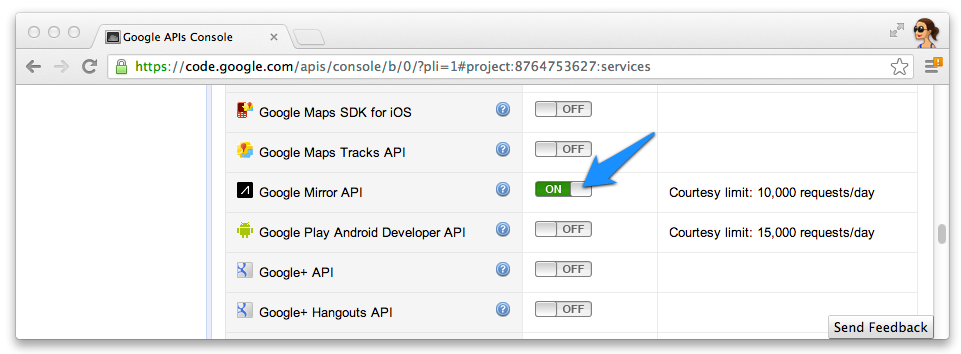
- Fai clic su Accesso API e crea un ID client OAuth 2.0 per un'applicazione web.
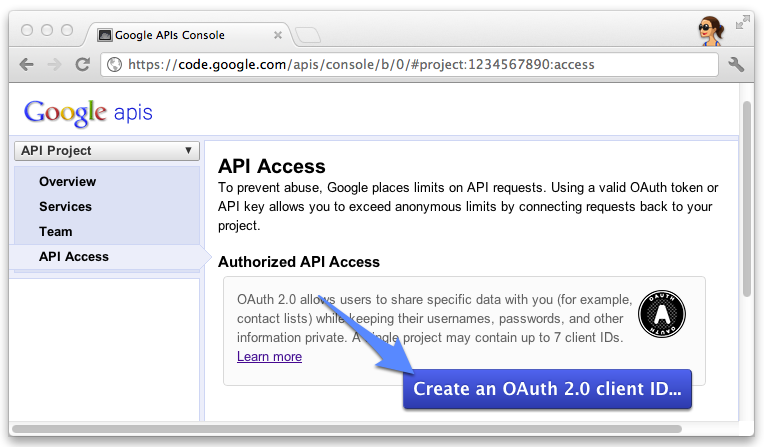
- Specifica il nome e l'icona del prodotto Glassware. Questi campi vengono visualizzati nella concessione OAuth
ai tuoi utenti.
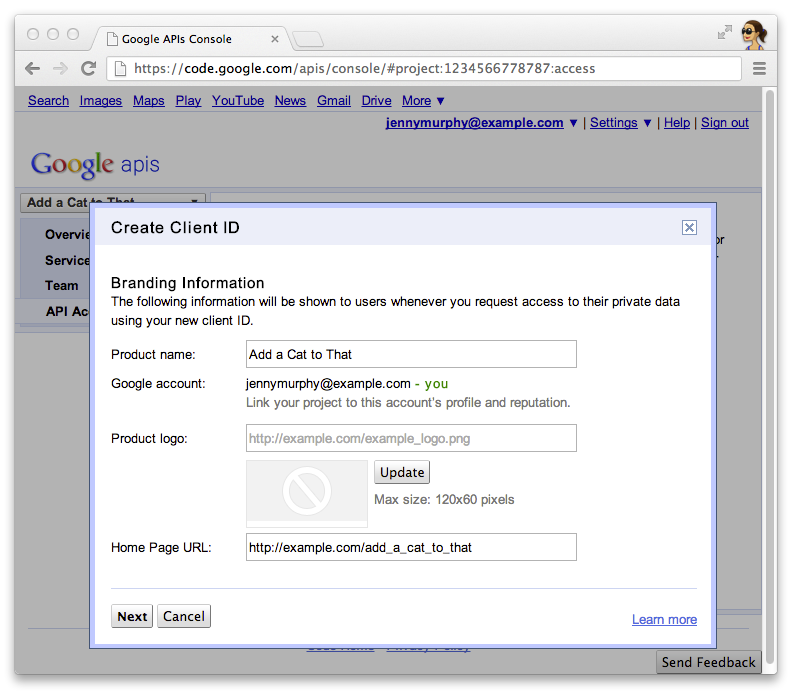
- Seleziona Web application (Applicazione web) e specifica un qualsiasi valore per il nome host, ad esempio
localhost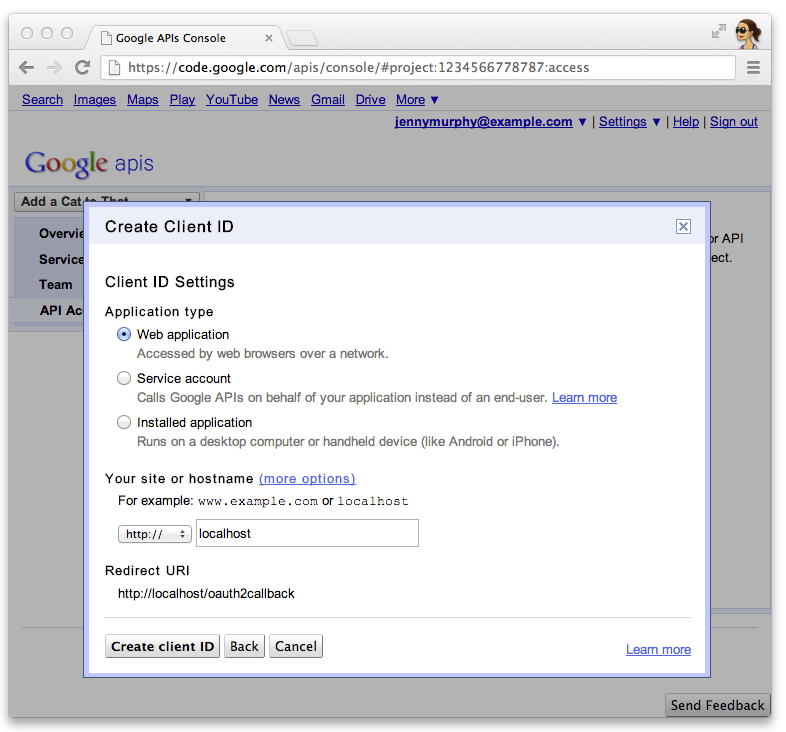
- Fai clic su Modifica impostazioni... per l'ID client in modo da specificare gli URI di reindirizzamento. Specifica
http://localhost:8080/oauth2callbacke l'URL di callback per App Engine ad esempiohttps://myappengineinstance.appspot.com/oauth2callback.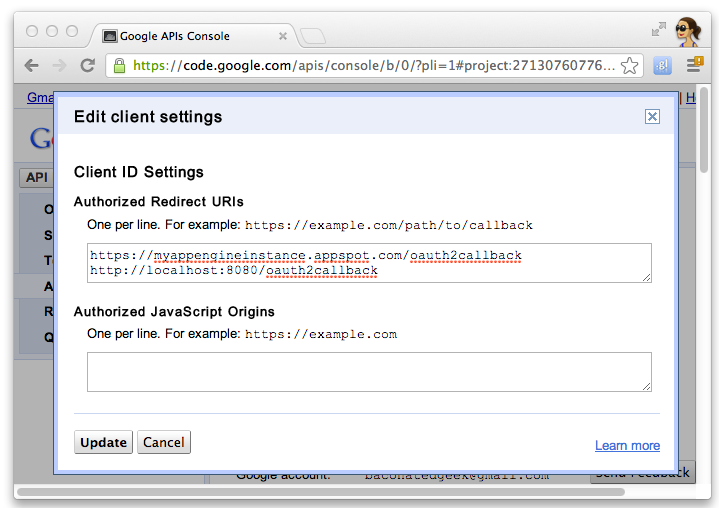
- Prendi nota dell'ID client e del secret dalla console API di Google. Ti serviranno
per configurare il progetto di avvio rapido.
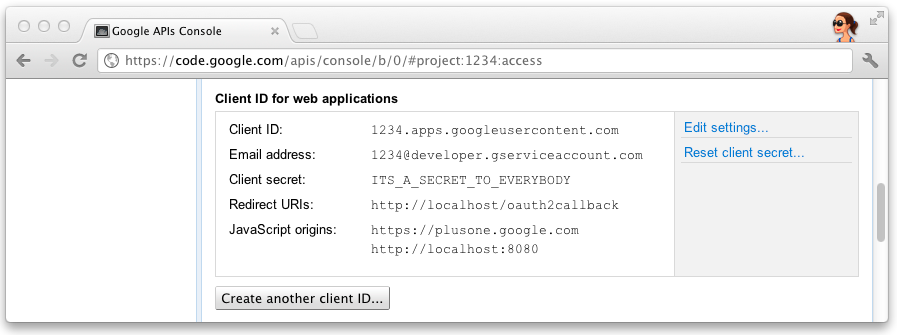
Configurazione del progetto
Configura il progetto Avvio rapido per utilizzare le informazioni del client API:
- Inserisci il tuo ID client e il tuo secret in
client_secrets.json:{ "web": { "client_id": "1234.apps.googleusercontent.com", "client_secret": "ITS_A_SECRET_TO_EVERYBODY", "redirect_uris": [ ], "auth_uri": "https://accounts.google.com/o/oauth2/auth", "token_uri": "https://accounts.google.com/o/oauth2/token" } }
- Genera un file
session.secretper memorizzare i cookie di sessione:$ python -c "import os; print os.urandom(64)" > session.secret
- Modifica
app.yamlper inserire l'ID applicazione App Engine:application: your_app_engine_application_id version: 1 runtime: python27 api_version: 1 threadsafe: true ...
Deployment del progetto
Premi il pulsante blu Esegui il deployment nell'interfaccia della GUI di avvio di App Engine o esegui questa shell per eseguire il deployment del tuo codice:
$ appcfg.py --oauth2 update .

